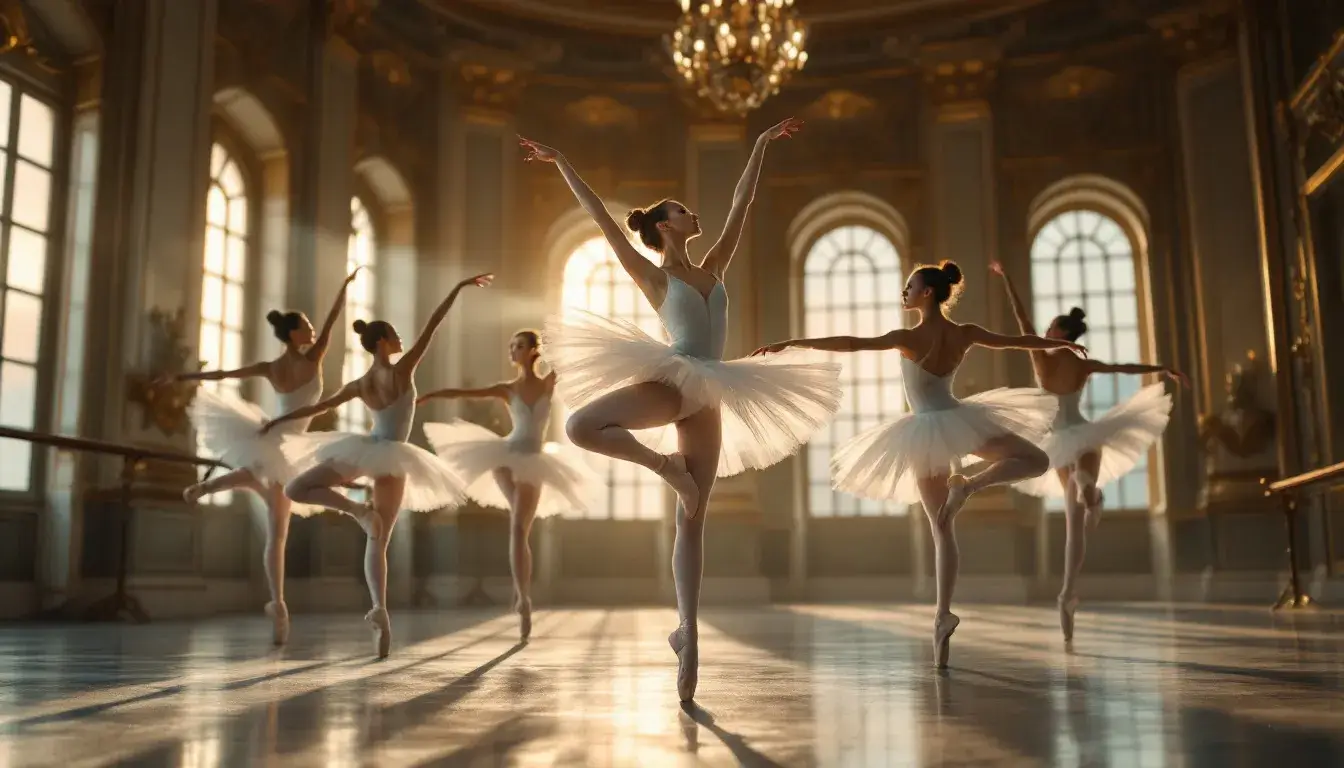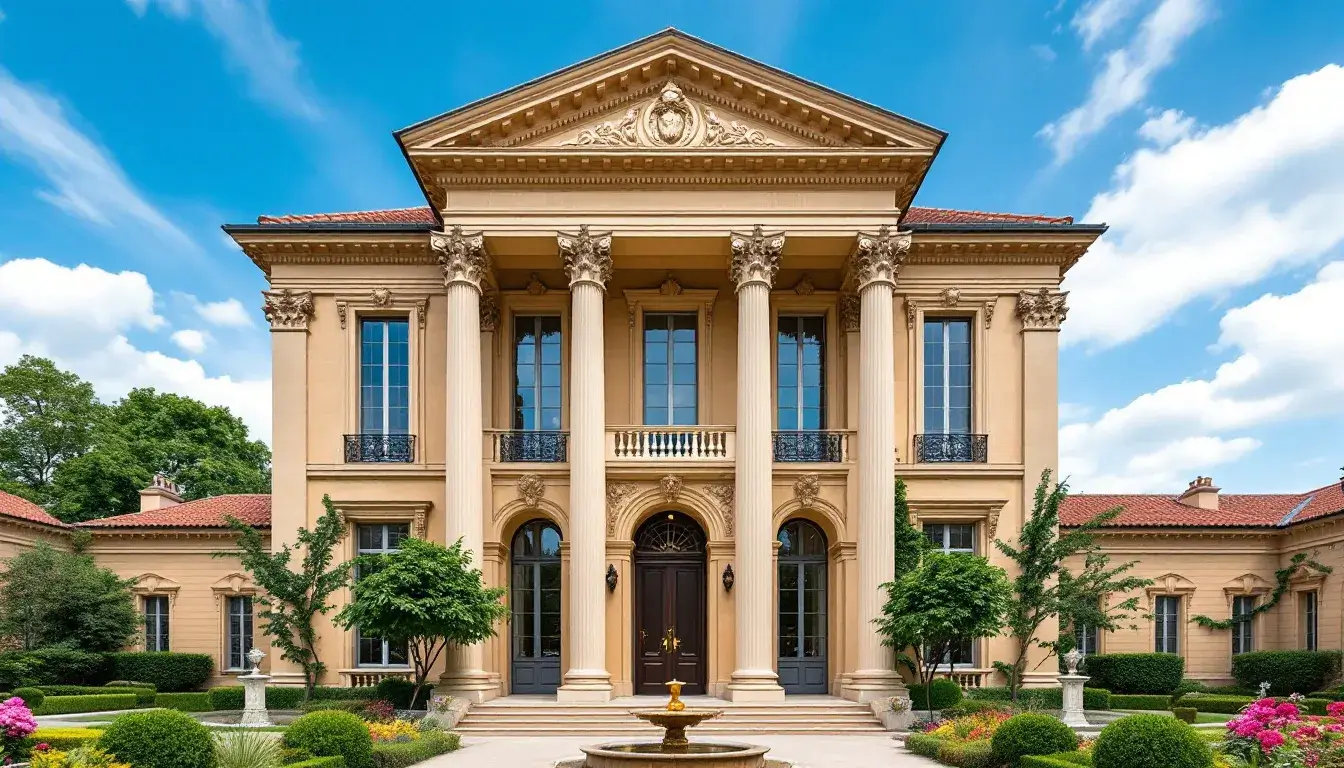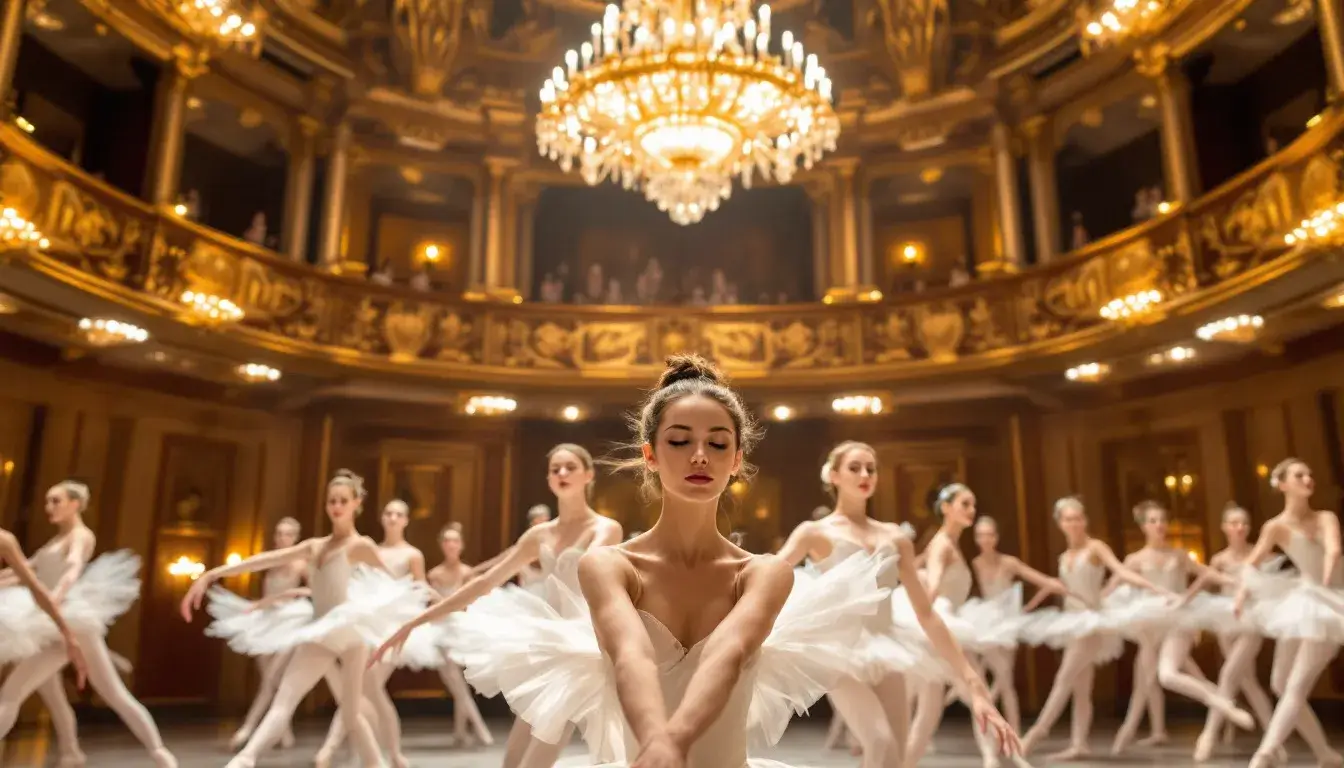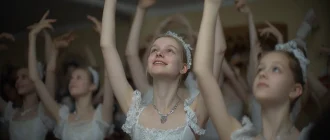Ready to find the top 20 best ballet schools in Europe? This guide lists elite institutions that offer world-class training and renowned faculty. Whether you dream of joining a leading ballet company or seeking a comprehensive education, you’ll find the best options here.
Outside Europe, prestigious ballet institutions include the American Ballet Theatre, the Australian Ballet School, the Boston Ballet, the New York City Ballet, and the San Francisco Ballet.
Key Takeaways
- European ballet schools are renowned for their rigorous training, distinguished faculty, and successful alumni, making them the premier choice for aspiring dancers.
- Key factors in selecting a ballet school include faculty expertise, curriculum structure, performance opportunities, and the success of its alumni.
- Institutions like the Paris Opera Ballet School and the Royal Ballet School have historic legacies and are recognized for producing top-tier dancers who excel globally in the ballet industry. Some institutions even claim to be the only ballet school in their region with such prestigious training programs, highlighting their exclusivity and elite status.
EU Ballet Schools Podcast
| Rank | Ballet School Name | Location | Notable Alumni | Website |
|---|---|---|---|---|
| 1 | Paris Opera Ballet School | Paris, France | Sylvie Guillem, Laurent Hilaire, Élisabeth Platel | operadeparis.fr |
| 2 | Royal Ballet School | London, United Kingdom | Margot Fonteyn, Darcey Bussell, Lauren Cuthbertson | royalballetschool.org.uk |
| 3 | La Scala Theatre Ballet School | Milan, Italy | Carla Fracci, Roberto Bolle, Alessandra Ferri | accademialascala.it |
| 4 | John Cranko School | Stuttgart, Germany | Marcia Haydée, Richard Cragun, Friedemann Vogel | john-cranko-schule.de |
| 5 | Royal Danish Ballet School | Copenhagen, Denmark | Erik Bruhn, Nikolaj Hübbe, Johan Kobborg | kglteater.dk |
| 6 | Dutch National Ballet Academy | Amsterdam, Netherlands | Igone de Jongh, Maia Makhateli, Michaela DePrince | atd.ahk.nl |
| 7 | Hamburg Ballet School | Hamburg, Germany | Hélène Bouchet, Silvia Azzoni, Alexandr Trusch | hamburgballett.de |
| 8 | European School of Ballet | Amsterdam, Netherlands | N/A (School established in 2016) | schoolofballet.eu |
| 9 | Brussels International Ballet School | Brussels, Belgium | N/A (School established in 2005) | brusselsintballet.org |
| 10 | Royal Swedish Ballet School | Stockholm, Sweden | Anneli Alhanko, Jan-Erik Wikström, Madeleine Onne | kungligasvenskabalettskolan.stockholm |
| 11 | Palucca University of Dance Dresden | Dresden, Germany | Henny Jurriëns, Uwe Scholz, Katja Wünsche | palucca.eu |
| 12 | Conservatoire National Supérieur de Musique et de Danse | Paris, France | Marie-Agnès Gillot, Jérémie Bélingard, Clairemarie Osta | conservatoiredeparis.fr |
| 13 | Zurich Dance Academy | Zurich, Switzerland | Katja Wünsche, Yen Han, Daniel Camargo | zhdk.ch |
| 14 | Ballet Academy of the University of Music and Performing Arts | Munich, Germany | Lucia Lacarra, Friedemann Vogel, Ksenia Ryzhkova | hmtm.de |
| 15 | English National Ballet School | London, United Kingdom | Tamara Rojo, Daria Klimentová, Cesar Corrales | enbschool.org.uk |
| 16 | Norwegian National Ballet School | Oslo, Norway | Grete Sofie Borud Nybakken, Silas Henriksen, Eugenie Skilnand | operaen.no |
| 17 | Finnish National Opera Ballet School | Helsinki, Finland | Minna Tervamäki, Jorma Elo, Petia Ilieva | oopperabaletti.fi |
| 18 | National Conservatory Dance School | Lisbon, Portugal | Filipa de Castro, Carlos Pinillos, Margarida Moreira | edcn.pt |
| 19 | Ballet School of the Opéra National du Rhin | Mulhouse, France | N/A (School established in 1972) | operanationaldurhin.eu |
| 20 | Central School of Ballet | London, United Kingdom | Christopher Marney, Sarah Kundi, Jenna Lee | centralschoolofballet.co.uk |
Note: The “Notable Alumni” column highlights distinguished dancers trained at these institutions.

Becoming a professional dancer starts with choosing the right ballet school. With its rich dance history and world-renowned institutions, Europe offers some of the best training grounds for young ballet dancers.
Discover Europe’s top 20 ballet schools, renowned for their rigorous training programs, distinguished faculty, and illustrious alums. Whether you’re aiming for a career in classical ballet or contemporary dance, these schools provide the foundation needed for success.
Introduction
Choosing the right ballet school is crucial for aspiring dancers. Ballet schools are not just educational institutions but the crucibles where raw talent is forged into professional excellence. These institutions impart technical proficiency while shaping dancers’ artistic and emotional facets.
In Europe, where ballet’s legacy has deep roots, school choice can significantly influence a dancer’s career trajectory. This guide highlights Europe’s best ballet schools, offering insights into their unique programs and what makes them stand out in the competitive ballet world.
The Legacy of European Ballet Schools
European ballet schools have long been the gold standard in ballet education. Founded in 1713, the Paris Opera Ballet School is the world’s oldest ballet institution, setting high standards in training for centuries. London’s Royal Ballet School, renowned for its elite dance faculty and rigorous curriculum, has produced numerous principal dancers for top ballet companies worldwide.
Institutions like the John Cranko School blend classical and contemporary ballet training, ensuring students develop technical skills and artistic expression. These schools’ legacy is their age and continued contributions to the art form, producing dancers who grace the stages of top ballet companies globally. Similarly, the San Francisco Ballet, established in 1933, is renowned for its excellence in the arts, producing elite dancers known for their diverse training in ballet, modern, and interpretive dance.
The influence of these prestigious ballet schools extends beyond their students. They have molded the fabric of ballet, influencing dance styles and performances globally. The rigorous training and high standards set by these schools ensure that their graduates are skilled dancers and custodians of the rich European ballet heritage.
Criteria for Selecting a Top Ballet School
Several criteria should be considered when choosing a ballet school to ensure it offers the best environment for growth and development. Faculty expertise is essential, as experienced instructors are crucial for teaching proper techniques and preventing injuries. Institutions like the Boston Ballet School, known for its comprehensive dance programs and talented instructors, exemplify the supportive environment that nurtures aspiring dancers.
Performance opportunities are also crucial. Schools offering regular showcases and concerts provide essential stage experiences invaluable for aspiring dancers. Understanding the costs, including tuition and additional fees, is also important, as high-quality training often comes at a premium.
The reputation and success of a local dance school’s alumni can also significantly influence future opportunities in the dance industry. Schools with successful graduates often have strong connections with leading ballet companies, providing a clear pathway to the professional world.
Benefits of Attending a European Ballet School
Attending a European ballet school can be a transformative experience for aspiring ballet dancers. These institutions are renowned for their rigorous and intensive training programs to produce technically proficient and artistically expressive dancers. Here are some of the key benefits:
- World-class training: European ballet schools are renowned for their excellence. Institutions like the Royal Ballet School and the Paris Opera Ballet School offer unparalleled training that hones technical skills and artistic expression.
- Cultural immersion: Studying ballet in Europe allows dancers to immerse themselves in a rich cultural heritage that has profoundly shaped the art form. This cultural exposure can deepen a dancer’s understanding and appreciation of ballet.
- Networking opportunities: European ballet schools attract students and faculty from around the globe, creating a valuable network of contacts. These connections can open doors to prestigious ballet companies and future career opportunities.
- Performance opportunities: Many European ballet schools provide numerous performance opportunities, allowing dancers to gain essential stage experience and build their confidence.
- Language skills: Studying in Europe often involves learning a new language, which can be invaluable for dancers aspiring to join international ballet companies.
Audition Process and Tuition
The audition process for European ballet schools is highly competitive, reflecting the high standards of these institutions. Here’s what aspiring dancers can expect:
- Audition process: Most European ballet schools require in-person auditions, but some may accept video submissions instead. The process typically includes a ballet class followed by a solo or group performance. Schools like the Royal Ballet School and the Paris Opera Ballet School are known for rigorous selection criteria.
- Tuition fees for European ballet schools vary widely, ranging from €5,000 to €20,000 per year, depending on the institution and program. Some schools offer scholarships or financial aid to help offset these costs.
- Living expenses: Besides tuition, students must budget for living expenses, including accommodation, food, and transportation. These costs must be considered when planning to study abroad.
Student Experiences and Testimonials
Hearing from those who have walked the path can provide invaluable insights. Here are some testimonials from students who have attended top European ballet schools:
“Attending the Royal Ballet School was a dream come true. The training was rigorous, but the faculty were supportive and encouraging. I feel like I’ve grown so much as a dancer and person.”
– Emily, Royal Ballet School graduate.
“I was hesitant to leave my family and friends to study ballet in Europe, but it was my best decision ever. The Paris Opera Ballet School was an incredible experience that opened my eyes to a new world of ballet.”
– David, a Paris Opera Ballet School graduate.
“The Dutch National Ballet Academy was an amazing experience. The faculty were knowledgeable and supportive, and the performance opportunities were incredible. I feel like I’ve gained so much confidence and experience as a dancer.”
– Sarah is a graduate of the Dutch National Ballet Academy.
Paris Opera Ballet School, France

Established in 1713 under King Louis XIV, the Paris Opera Ballet School is the world’s oldest ballet institution with a prestigious legacy. Directed by former ballet star Elisabeth Platel, the school is known for its rigorous training program that emphasizes clarity of technique, strength, and musicality.
The Paris Opera Ballet School students participate in challenging ballet classes and workshops, including a summer intensive program and intensives that offer performance experiences. The school’s notable alums have significantly contributed to the ballet world, further reinforcing its reputation for producing top-tier dancers.
Royal Ballet School, England

Founded by Dame Ninette de Valois, the Royal Ballet School nurtures elite ballet talent and creates a repertory ballet company. In 2003, the school relocated to Floral Street, Covent Garden, and boasts state-of-the-art studios and facilities that enhance its training programs.
Recognized as the UK’s foremost classical ballet institution, the Royal Ballet School has produced many principal dancers for leading companies worldwide. Its rigorous curriculum and elite faculty consistently set high standards in ballet education.
John Cranko Schule, Germany
Germany’s John Cranko Schule is renowned for its blend of rigorous technical training and artistry. The curriculum nurtures creativity alongside technical skills, helping to foster well-rounded dancers.
With strong ties to the Stuttgart Ballet, the John Cranko Schule offers direct pathways into professional companies, making it a top choice for many aspiring dancers.
Dutch National Ballet Academy, Netherlands

Affiliated with the Dutch National Ballet, the Dutch National Ballet Academy specializes in classical ballet training while integrating contemporary dance techniques. The academy’s innovative training methods prepare students for various dance styles, making them versatile and professional performers.
The Dutch National Ballet Academy offers summer intensives, a ballet summer school, and company experience weeks, which provide young dancers with vibrant community atmospheres and practical training opportunities.
Princess Grace Academy, Monaco
Established in 1975, the Princess Grace Academy in Monaco offers high-level dance education inspired by Princess Grace and Prince Rainier III. The academy boasts an international student body, enabling dancers of various nationalities to enhance their training.
Led by Artistic Director Luca Masala, the academy focuses on pre-professional training and collaborates with institutions like Les Ballets de Monte-Carlo, ensuring a high standard of education.
Hamburg Ballet School, Germany
Under John Neumeier’s leadership, the Hamburg Ballet School emphasizes holistic dancer development, balancing technical training and individual creativity. The school nurtures creativity alongside technical skills, producing well-rounded dancers.
Students have numerous performance opportunities, showcasing their talent and gaining practical experience in a professional setting.
La Scala Theatre Ballet School, Italy
La Scala Theatre Ballet School has been operating since 1813 and emphasizes excellence in performing arts training. The school focuses on classical ballet, rooted in a tradition dating back to the theatre’s inception in 1778.
Affiliated with the historic La Scala Theatre, students perform at one of the world’s leading opera and ballet venues, enhancing their professional experience.
Palucca University of Dance, Dresden, Germany
The Palucca University of Dance Dresden provides a comprehensive education in classical ballet and contemporary dance styles. Students gain practical experience through classes taught by various teachers and guest artists, which enhances their skills and creativity.
The university’s program cultivates autonomous artists equipped for diverse careers in modern dance. It emphasizes individual choreography and artistic projects.
Zurich Dance Academy, Switzerland
The Zurich Dance Academy offers a structured educational path in classical ballet for students aged 11 to 19, including a three-year foundation program. The advanced program leads to a Federal Certificate in Classical Dance, demonstrating the academy’s commitment to excellence.
Graduates of Zurich Dance Academy are frequently seen in dance companies worldwide, highlighting the school’s successful training and international reputation.
English National Ballet School, England
The English National Ballet School trains aspiring dancers aged 16 to 19, helping to cultivate the next generation of world-class artists. The school’s strong relationship with the English National Ballet inspires students and provides professional connections.
The move to a new joint facility in East London will enhance collaboration and provide state-of-the-art training environments, including multiple studios and a rehabilitation center.
Vienna State Opera Ballet School, Austria

Austria’s premier institution for ballet education, the Vienna State Opera Ballet School, offers theoretical and practical training. Students aged 10 to 18 train in seven studios named after prominent Viennese dance figures, focusing on technical skills and artistic expression.
Performances with the Vienna State Opera and Volksoper Wien provide students real-world experience, enhancing their training and professional opportunities.
Royal Danish Ballet School, Denmark
The Royal Danish Ballet School is renowned for its Bournonville method, emphasizing a storytelling approach through dance. Bournonville’s choreography showcases lightness and joy, often featuring intricate mime that enhances storytelling.
The school’s historical connection with the Royal Danish Ballet is integral to preserving and teaching the Bournonville style. It has produced renowned dancers who have significantly contributed to the ballet world.
Norwegian National Ballet School, Norway
The Norwegian National Ballet School emphasizes personalized training catering to each dancer’s unique development needs. Students are encouraged to cultivate individual artistic expression while maintaining a strong foundation in classical ballet technique.
Students benefit from a supportive environment that promotes technical skill development and emotional well-being, preparing them for successful careers in ballet.
Finnish National Ballet School, Finland
The Finnish National Ballet School offers a balanced curriculum integrating classical ballet and contemporary dance. Students benefit from a diverse training regimen that includes classical ballet, modern techniques, and character dance.
The school is recognized for its supportive and inclusive environment. It fosters creativity and individual expression and prepares students for diverse careers in dance.
Basel Ballet School, Switzerland
Basel Ballet School is noted for its strong academic and performance standards, contributing to its esteemed reputation in the ballet community. The school provides a nurturing and safe environment for aspiring dancers, focusing on their mental and physical well-being and emotional health.
Recently, the school has faced challenges in maintaining its curriculum amidst evolving trends in professional dance training. It has implemented changes to adapt to modern ballet training demands while preserving its classical roots.
Lisbon National Conservatory Dance School, Portugal
The Lisbon National Conservatory Dance School’s curriculum includes technique, dance history, and aesthetics, reflecting a comprehensive educational approach. The school has seven studios designed for dance practice, providing an excellent training environment.
Throughout its history, the Conservatory has experienced periods of decline and revitalization, influenced by political and cultural shifts in Portugal. Currently, it has an enrollment of 160 students, continuing its legacy of excellence in ballet training.
Summer Ballet Intensives in Europe
Summer ballet intensives allow dancers to enhance their skills during the summer months. Here are some of the top ballet summer course programs in Europe:
- Royal Ballet School Summer Intensive: This program allows dancers to train with the Royal Ballet School faculty and perform in a final showcase. It’s an excellent way to experience the school’s rigorous training environment.
- Paris Opera Ballet School Summer Intensive: Dancers can train with the esteemed faculty of the Paris Opera Ballet School and participate in a final performance. This intensive is perfect for those looking to immerse themselves in the French ballet tradition.
- Dutch National Ballet Academy Summer Intensive: This program offers dancers the chance to train with the Dutch National Ballet Academy faculty and perform in a final showcase. It’s ideal for those interested in a blend of classical and contemporary ballet training.
Safety and Supervision
Ensuring the safety and well-being of students is a top priority for European ballet schools. Here are some of the measures they take:
- 24/7 supervision: Many schools provide round-the-clock supervision, including dormitory staff and security personnel, to ensure students are always safe.
- Safety protocols: Schools have established safety protocols for emergencies, including first aid kits and emergency contact information, to handle any situation promptly.
- Student support services: Many institutions offer comprehensive support services, including counseling and academic assistance, to help students adjust to life away from home and thrive in their new environment.
By choosing a European ballet school, aspiring dancers can benefit from world-class training, cultural immersion, and a supportive environment that fosters personal and professional growth.
Resume
The journey through the top 20 ballet schools in Europe reveals a rich tapestry of history, innovation, and dedication to the timeless art form of ballet. Each institution, from the Paris Opera Ballet School to the Lisbon National Conservatory of Dance, plays a crucial role in shaping the future of ballet dancers. These schools provide superior dance training and foster an environment of creativity, discipline, and artistic expression.
The New York City Ballet, founded by George Balanchine and the School of American Ballet, highlights the importance of formal training and the legacy of success that has resulted from this partnership.
Aspiring dancers must carefully consider their choices, weighing factors such as faculty expertise, curriculum structure, performance opportunities, and alumni’s success. The right school can open doors to prestigious ballet companies and a fulfilling career in the dance world. As you embark on this exciting journey, remember that these schools’ legacy and their faculty’s dedication will be your guiding stars.
FAQ
What age range do top European ballet schools accept for full‑time training?
Most prestigious European ballet schools accept students between 11 and 18 years of age. For instance, the Royal Ballet School in England opens Year 9 auditions to 13–14‑year‑olds. At the same time, the Paris Opera Ballet School offers audition tracks starting at age eight and extending to advanced courses for students.
How competitive are auditions for a leading European ballet school?
Auditions are highly selective: dossiers and video prescreens can eliminate the majority of applicants before in‑person rounds. For example, the Paris Opera Ballet School conducts a mandatory pre‑selection. It keeps only a fraction of the dancers, sometimes fewer than 10, after final exams, illustrating acceptance rates that can dip below 10 percent.
Which languages are commonly used in European ballet programs?
English dominates many international academies—even in non‑Anglophone countries—because companies tour worldwide. Programs such as the Dutch National Ballet Academy teach in both Dutch and English. German schools like John Cranko Schule or Palucca Dresden deliver artistic classes in German, yet offer English academic or support modules for international students.
What do tuition fees look like at a top ballet boarding school?
Fees vary widely: at the Royal Ballet School, annual boarding tuition is about £38,000, whereas short‑term intensives can cost £2,880 for two residential weeks. In contrast, the European School of Ballet in Amsterdam charges €500–€600 for a one‑week acceptance into its trainee programs, reflecting the diversity of price points across Europe.
Are scholarships or bursaries available for talented dancers with limited means?
Yes. The Royal Ballet School means-test support so that around 90 percent of full‑time students receive some financial aid; travel bursaries and donor‑funded awards further offset costs. The European School of Ballet also grants one‑week scholarships at competitions or seasonal schools, illustrating Europe‑wide commitment to accessibility.
Do European ballet academies combine academic study with dance training?
Leading schools run dual curricula. At White Lodge (Royal Ballet School), students complete six academic lessons daily alongside technique classes, preparing for GCSEs or A‑levels. Updated curriculum policies emphasise balanced education, so graduates leave with recognised secondary‑school qualifications and elite dance training.
What is a typical daily schedule in a European ballet boarding academy?
A schedule often starts around 7 a.m. and finishes around 8 p.m. Students at White Lodge have four hours of academics and two hours of ballet before afternoon rehearsals and supervised study. Older English National Ballet School trainees log about 35 contact hours weekly, including technique, repertoire, and conditioning.
How do schools support dancer health and injury prevention?
Comprehensive healthcare teams are standard. The Royal Ballet School’s Healthy Dancer Programme employs physiotherapists, sports physicians, nutritionists, and clinical psychologists. At the same time, Palucca University of Dance Dresden integrates an on‑campus health team that collaborates daily with artistic faculty.
What mental‑wellbeing measures are in place after recent body‑image debates?
Following high‑profile body‑shaming settlements, institutions have expanded mental‑health provision: counsellors, confidential reporting lines, and safeguarding leads now accompany every training level, reflecting a Europe‑wide push for healthier cultures in elite ballet environments.
What boarding options exist for international students?
Most European ballet schools operate on‑site residences. Vaganova Ballet Academy offers newly renovated dormitory blocks with shared facilities. English schools like White Lodge provide supervised houses inside their campuses, creating safe environments for minors and easing daily logistics for intensive timetables.
How do dance academies in Germany integrate with professional companies?
Germany’s dance academies often feed directly into resident ensembles. John Cranko Schule aligns its graduate showcases with Stuttgart Ballet, one of Europe’s best‑ranked companies, giving students clear recruitment pathways and stage experience at world‑class venues.
What visa or residence permits are required for non‑EU dancers?
Rules differ by country, but many schools help navigate the process. In the Netherlands, the European School of Ballet notes that EU/Schengen students can attend without additional permits, whereas non‑EU dancers must secure study visas; the school provides documentation for Dutch immigration authorities.
How does training differ between classical and contemporary tracks in Europe?
Classical divisions focus on repertoire, pointe technique, and pas de deux, while contemporary streams stress floor work, improvisation, and cross‑disciplinary projects. Institutions like the Dutch National Ballet Academy offer discrete classical and expanded contemporary dance programs, allowing students to specialise without leaving Europe’s top training hubs.
Do summer intensives offer a route into full‑time European programs?
Yes. Summer intensives at schools such as the Royal Ballet School or ESB double as extended auditions; strong performers may receive invitations to long‑term professional or trainee tracks, making short courses a strategic entry point for aspiring dancers worldwide.







